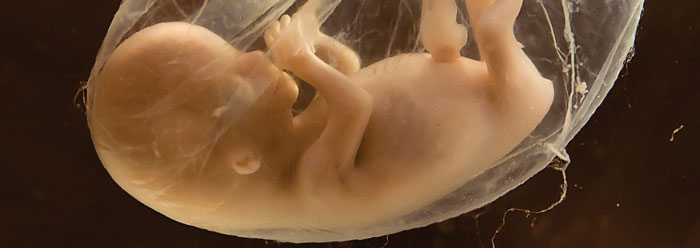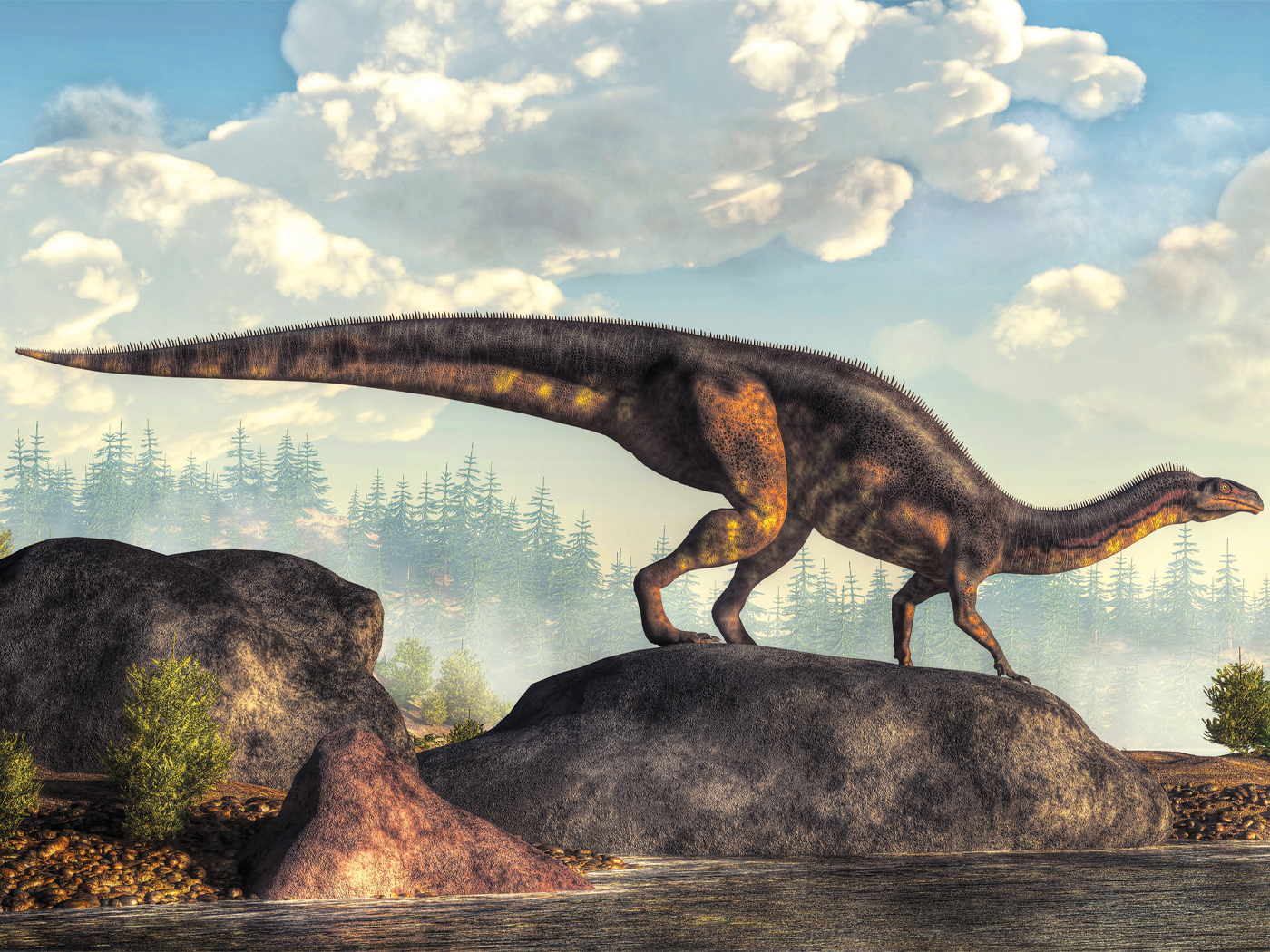“Generations of biology students may have been misled by a famous set of drawings of embryos published 123 years ago by the German biologist Ernst Haeckel.”1 Science magazine is referring to Haeckel’s sketches of diverse animal embryos first published in 1874 (Figure 1). They report that Haeckel fraudulently minimized major differences between animals at the earliest developmental stages. This fraud is peculiar because it is being “rediscovered” by new research. Remarkably, Science notes that some embryologists of Haeckel’s day had doubts about the drawing’s accuracy, and his peers actually got him to admit he used “artistic license.” Yet these drawings (or similar reproductions) have been incorporated into nearly every major biology textbook ever since.2 So, unlike Piltdown Man, Archaeoraptor, and other evolutionary frauds that only temporarily duped everyone, Haeckel’s blunder misleads to this day.
 Thus, present biology students are still deceived by a complicated tangle of misleading ideas that clever evolutionists regularly attach to Haeckel’s fraudulent drawings.
Thus, present biology students are still deceived by a complicated tangle of misleading ideas that clever evolutionists regularly attach to Haeckel’s fraudulent drawings.
Misleading Drawings and Concepts Promote Evolution
I didn’t escape being misled. In 1975 my sophomore biology textbook referred to a drawing very similar to Haeckel’s. Like most students absorbing this information for their first—and possibly only—time, I was somewhat shocked by the incredible fish-like similarity of all early embryos…especially humans. The visual evidence looked undeniable.
These drawings persuasively promoted three powerful evolutionary concepts. First, life evolved from “primitive” animals to complex humans. This “fact” is seen in the supposedly nonhuman structures that humans possess during development. My textbook commented, “For example, the early human embryo has a well-developed tail and also a series of gill pouches in the pharyngeal region.”3
Second, as my textbook went on to say, “Human and fish embryos resemble each other because human beings and fish share a common remote ancestry.”3 It presented the remarkable similarity of the embryos in the illustration as strong evidence for a universal common ancestor.
Third, a synopsis of the evolutionary history of life on Earth emerges as scientists map out all stages of embryonic development for every species. Remarkably, the stages of embryonic development for organisms, called ontogeny, supposedly reenacted or “recapitulated” their evolutionary history through time, which was called their phylogeny. Haeckel’s embryos were clearly time-lapse pictures of evolution itself.
Those concepts remain cemented in contemporary evolutionary thinking. During medical school in 1992, my graduate-level human development textbook contained the same drawings and concepts.4
In 2001, Harvard’s Ernst Mayr included Haeckel’s exact embryos in his definitive work on evolution. Referencing them, he reaffirmed that only evolution explains why “the embryos of birds and mammals develop gill slits, like fish embryos.”5 Mayr detailed how he believed embryology demonstrated both universal common ancestry and recapitulation:
An early human embryo, for instance, is very similar not only to embryos of other mammals (dog, cow, mouse), but in its early stages even to those of reptiles, amphibians, and fishes…[the] study of the embryonic stages very often shows how a common ancestral stage gradually diverges in different branches of the ancestral tree…[that] in certain features, as in the gill pouches, the mammalian embryo does indeed recapitulate the ancestral condition…[which] this is the same reason why all terrestrial vertebrates (tetrapods) develop gill arches at a certain stage in their ontogeny.5
As a student, I implicitly accepted concepts built from Haeckel’s drawings as truthful. Belief in evolution seemed reasonable. Unfortunately, I was deceived by the picture’s and concept’s extreme misrepresentation of reality.
Haeckel’s Drawings Are a Spectacular Fraud
Though Science’s article labeled Haeckel a fraud, it’s possible that Science could also report misleading beliefs. To be fair, Haeckel was using 19th-century equipment, and he did not hide every embryonic difference. Considering these mitigating factors, Robert Richards of the University of Chicago argues that intentional fraud by Haeckel has not been proven. He suggests that Haeckel critic Michael Richardson presents his embryonic research findings in ways that “exaggerates their differences from Haeckel’s images.” Richards also argues that Haeckel shouldn’t be the sole scapegoat for perpetuating this misinformation. He points out how evolutionary embryologists since Haeckel have also advanced his views, so “actually, these recent embryologists ought to have been judged more culpable, given the increase of knowledge, standards, and instrumentation during the last 125 years.”6
However, Michael Richardson makes the case that the magnitude of the true embryonic dissimilarities concealed by Haeckel indicates intentional fraud to promote evolution. He claims, “Unfortunately, Haeckel was overzealous. When we compared his drawings with real embryos, we found that he showed many details incorrectly. For example, we found variations in embryonic size, external form, and segment number which he did not show.”7 As he sums up, “It looks like it’s turning out to be one of the most famous fakes in biology.”8
Harvard’s Stephen Jay Gould, a zealous evolutionist himself, frames the legacy of Haeckel’s behavior:
I do dislike the common phrase “artistic license,” especially for its parochially smug connotation (when used by scientists) that creative humanists care little for empirical accuracy. (After all, the best artistic “distortions” record great skill and conscious intent.) But I don’t know how else to describe the work of Haeckel. To cut to the quick of this drama: Haeckel had exaggerated the similarities by idealizations and omissions. He also, in some cases—in a procedure that can only be called fraudulent—simply copied the same figure over and over again…. Haeckel’s drawings, despite their noted inaccuracies, entered into the most impenetrable and permanent of all quasi-scientific literatures: standard student textbooks of biology…. Once ensconced in textbooks, misinformation becomes cocooned and effectively permanent, because, as stated above, textbooks copy from previous texts.9
Exposing Haeckel-like textbook drawings as fraudulent is important, but the story of deception is far from over. The concepts attached to them are even more misleading.
Imaginary Gill Slits, Tails, and Biogenic Laws
 Looking at the embryos in Figure 2, much of evolutionary embryology stands on the belief that folds in the neck region are truly gill slits and, for the human, that the long stretch of vertebral tissue is honestly a tail. Darwin appealed to that belief when he asserted that embryos “recapitulate” the adult stages of their ancestors in evolutionary history. He says, “It is highly probable that with many animals the embryonic or larval stages show us, more or less completely, the condition of the progenitor of the whole group in its adult state.”10 How can Darwin or other evolutionists see things like evolutionary progenitors or gill slits? Only by imagination.
Looking at the embryos in Figure 2, much of evolutionary embryology stands on the belief that folds in the neck region are truly gill slits and, for the human, that the long stretch of vertebral tissue is honestly a tail. Darwin appealed to that belief when he asserted that embryos “recapitulate” the adult stages of their ancestors in evolutionary history. He says, “It is highly probable that with many animals the embryonic or larval stages show us, more or less completely, the condition of the progenitor of the whole group in its adult state.”10 How can Darwin or other evolutionists see things like evolutionary progenitors or gill slits? Only by imagination.
Darwin’s invocation of imagination into evolutionary scenarios legitimatized plugging colossal data gaps with evolution’s look-imagine-“see” methodology. Darwin visualized a bear evolving into a whale, a light-sensitive spot evolving into an eye, and embryos as reenacting their adult evolutionary progenitors.
The history of evolutionism shows how advocates can simply look at bones from Piltdown England and see ape features in a human skull, or look at bones embedded in the soft tissue of a whale’s underbelly and see “whale hips,” or see “primitive” features in a living fish, or how Richard Dawkins can look at a human retina and plainly see that it’s “wired backwards.”11 All of these instances have turned out to be blunders because evolutionists simply project evolutionary ideas onto any given finding, and, via their fertile imaginations, clearly see just what they were looking for.
Shouldn’t students be skeptical when they’re told that evolutionists can simply look at folds in embryos and see gill slits? The truth is that these are only folds of tissue in the pharynx region of vertebrates during the pharyngula stage of development. For mammals, birds, and reptiles, they never develop into a structure that is in any way like fish gills. In humans, for instance, this fold tissue develops into cartilage or bone for the jaw, inner ear, hyoid, and voice box. Muscles for the face, temple, and neck form out of them, as well as the thyroid, parathyroid, and thymus glands. No evidence exists that they ever resembled an adult fish or that throughout human history they lost the ability to form fish-like structures and now form new ones.
Regarding Haeckel’s biogenic law of recapitulation, Richardson’s work in the 1990s demonstrated that concept was utterly incorrect.12 His results confirmed what Keith Thompson, president of the Academy of Natural Sciences, declared in 1988: “Surely the biogenic law is as dead as a doornail.”13
The human “tail” is another misnomer born of evolutionism’s look-imagine-“see” methodology. What we actually see through time are early precursors to the spine forming the axial skeleton (skull to coccyx). In a slightly lagging sequence, the rest of the embryo grows from head-to-rump on this foundational framework. So, when evolutionists see a lower portion of the axial skeleton where the embryo is yet to grow, they “see” a transient “tail.” In their imaginations, human embryos are recapitulating their reptilian past. But there never is a tail. The embryo grows down to its coccyx, which begins anchoring developing muscles of the pelvic floor.
How much of the evolutionary story makes sense if human embryos never have gill slits or a tail?
What a Tangled Web We Weave
Embarrassed that his exposure of Haeckel’s fraud had become a “Creationist cause celebre,” Richardson later insisted that “data from embryology are fully consistent with Darwinian evolution.”14 Like Haeckel, Richardson began misleading people by declaring that an organism’s “shared developmental program” that showed “that development in different animals is controlled by common genetic mechanisms” fit evolutionary theory. The fact is evolutionists never expected common genetic mechanisms: they were “shocked” and “stunned” upon discovery, and only pivoted to embrace relabeled “conserved” mechanisms after detection. It was creationists who had first discussed common designs for common features.15
Students should be aware of evolutionary authority—such as when Jerry Coyne altered his approach to salvage recapitulation. He claims, “Embryonic stages don’t look like the adult forms of their ancestors, as Haeckel claimed, but like the embryonic forms of ancestors.”16 How? Evolution doesn’t erase developmental plans; it somehow keeps adding new information. According to Coyne, “It’s usually easier to simply tack less dramatic changes onto what is already a robust and basic developmental plan….This ‘adding new stuff onto old’ principle also explains why the sequence of developmental changes mirrors the sequence of organisms.”16
But Coyne misleads. The “adding new stuff onto old” principle is born of evolution’s look-imagine-“see” mechanism. Coyne’s scheme has many inconsistencies. He admits the sequence “is neither strict nor inevitable: not every feature of an ancestor’s embryo appears in its descendants, nor do all stages of development unfold in strict evolutionary order.” He adds that plants “have dispensed with nearly all traces of their ancestry during development.”16 Yet two decades prior, Keith Thomson foresaw Coyne’s “add on” principle as absurd since the development of a species “would be almost infinitely long, as the sequence of characteristics of every ancestor, every evolutionary divergence, was rerun…through the adding on of new stages—terminal additions—to the developmental history of the immediate ancestor.”17
Lessons Learned
Watching a single cell assimilate resources and self-develop into an extraordinary creature should evoke a sense of awe for our Creator in any mind not blinded by naturalistic thinking. Ironically, unbridled imagination actually blinds some minds. As biochemist Michael Behe noted regarding Haeckel’s embryos, “The story of the embryos is an object lesson in seeing what you want to see.”18 But lest we overlook a beam in our own eye by focusing on others, we should examine whether we promote misleading evolutionary concepts or jargon that might have crept into our thinking unaware, thereby unintentionally helping the wrong side.
References
- Pennisi, E. 1997. Haeckel’s Embryos: Fraud Rediscovered. Science. 277 (5331): 1435.
- Luskin, C. What Do Modern Textbooks Really Say About Haeckel’s Embryos? Discovery Institute. Posted on discovery.org March 27, 2007, accessed August 29, 2016.
- Keeton, W. T. 1972. Biological Science, 2nd Ed. New York: W. W. Norton & Company, 550.
- Moore, K. L. 1989. Before We Are Born, 3rd Ed. Philadelphia, PA: W. B. Saunders Company, 70.
- Mayr, E. 2001. What Evolution Is. New York: Basic Books, 27-30.
- Richards, R. J. 2009. Haeckel’s embryos: fraud not proven. Biology and Philosophy. 24: 147–154.
- Richardson, M. K. et al. 1998. Haeckel, Embryos, and Evolution. Science. 280 (5366): 983.
- Pennisi, Haeckel’s Embryos.
- Gould, S. J. 2000. Abscheulich! (Atrocious!) Haeckel’s distortions did not help Darwin. Natural History. 109 (2): 42–49.
- Darwin, C. 1859. On the Origin of Species by Means of Natural Selection. London: John Murray, 395.
- Dawkins, R. 1987. The Blind Watchmaker. New York: W. W. Norton & Co., 93.
- Richardson, M. K. et al. 1997. There is no highly conserved embryonic stage in the vertebrates: implications for current theories of evolution and development. Anatomy and Embryology. 196 (2): 91-106. Also, Thomas, B. 2012. Do People Have ‘Gill Slits’ in the Womb? Creation Science Update. Posted on ICR.org July 20, 2012, accessed September 1, 2016.
- Thomson, K. S. 1988. Marginalia: Ontogeny and phylogeny recapitulated. American Scientist. 76 (3): 273-275.
- Richardson, Haeckel, Embryos, and Evolution.
- Guliuzza, R. 2015. Major Evolutionary Blunders: Evolutionary Predictions Fail the Reality Test. Acts & Facts. 44 (9): 17-19.
- Coyne, J. 2009. Why Evolution Is True. New York: Viking, 78. Emphasis in original.
- Thomson, Marginalia, 273–274.
- Behe, M. J. Teach Evolution—And Ask Hard Questions. New York Times. Posted on nytimes August 13, 1999, accessed September 28, 2016.
* Dr. Guliuzza is ICR’s National Representative.






















